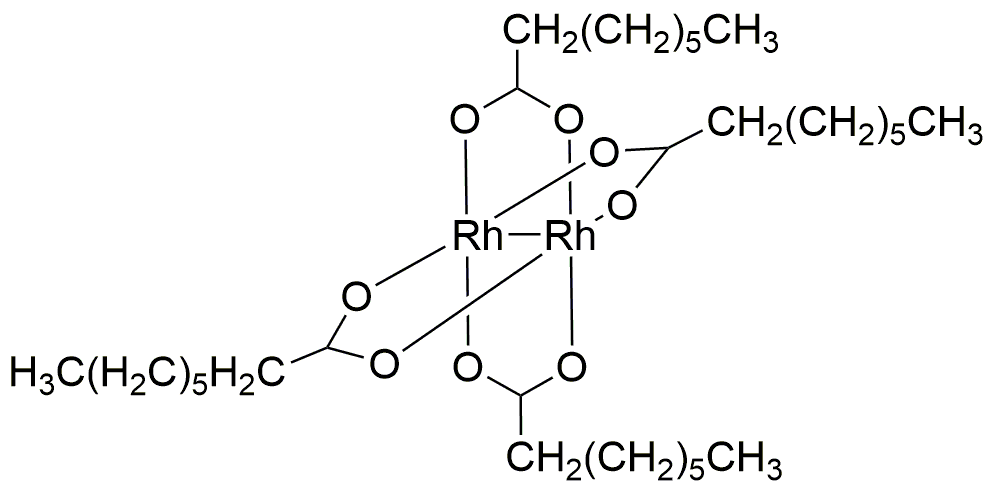Rhodium(II) octanoate dimer is widely utilized in research focused on:
- Catalysis: This compound serves as an effective catalyst in various organic reactions, particularly in the production of fine chemicals and pharmaceuticals, enhancing reaction rates and selectivity.
- Polymerization Processes: It is employed in the polymer industry to facilitate the synthesis of polymers with specific properties, improving the quality and performance of end products.
- Environmental Applications: Rhodium(II) octanoate dimer is used in processes aimed at reducing environmental pollutants, such as in catalytic converters for automotive applications, contributing to cleaner emissions.
- Research in Organometallic Chemistry: This compound is a valuable tool for researchers studying organometallic complexes, helping to advance knowledge in the field and leading to the development of new materials.
- Electrochemical Applications: It finds use in electrochemical sensors and devices, where its unique properties can enhance sensitivity and selectivity for detecting various analytes.
General Information
Properties
Safety and Regulations
Applications
Rhodium(II) octanoate dimer is widely utilized in research focused on:
- Catalysis: This compound serves as an effective catalyst in various organic reactions, particularly in the production of fine chemicals and pharmaceuticals, enhancing reaction rates and selectivity.
- Polymerization Processes: It is employed in the polymer industry to facilitate the synthesis of polymers with specific properties, improving the quality and performance of end products.
- Environmental Applications: Rhodium(II) octanoate dimer is used in processes aimed at reducing environmental pollutants, such as in catalytic converters for automotive applications, contributing to cleaner emissions.
- Research in Organometallic Chemistry: This compound is a valuable tool for researchers studying organometallic complexes, helping to advance knowledge in the field and leading to the development of new materials.
- Electrochemical Applications: It finds use in electrochemical sensors and devices, where its unique properties can enhance sensitivity and selectivity for detecting various analytes.
Documents
Safety Data Sheets (SDS)
The SDS provides comprehensive safety information on handling, storage, and disposal of the product.
Product Specification (PS)
The PS provides a comprehensive breakdown of the product’s properties, including chemical composition, physical state, purity, and storage requirements. It also details acceptable quality ranges and the product's intended applications.
Certificates of Analysis (COA)
Search for Certificates of Analysis (COA) by entering the products Lot Number. Lot and Batch Numbers can be found on a product’s label following the words ‘Lot’ or ‘Batch’.
Numéro de catalogue
Numéro de lot/série
Certificates Of Origin (COO)
This COO confirms the country where the product was manufactured, and also details the materials and components used in it and whether it is derived from natural, synthetic, or other specific sources. This certificate may be required for customs, trade, and regulatory compliance.
Numéro de catalogue
Numéro de lot/série
Safety Data Sheets (SDS)
The SDS provides comprehensive safety information on handling, storage, and disposal of the product.
DownloadProduct Specification (PS)
The PS provides a comprehensive breakdown of the product’s properties, including chemical composition, physical state, purity, and storage requirements. It also details acceptable quality ranges and the product's intended applications.
DownloadCertificates of Analysis (COA)
Search for Certificates of Analysis (COA) by entering the products Lot Number. Lot and Batch Numbers can be found on a product’s label following the words ‘Lot’ or ‘Batch’.
Numéro de catalogue
Numéro de lot/série
Certificates Of Origin (COO)
This COO confirms the country where the product was manufactured, and also details the materials and components used in it and whether it is derived from natural, synthetic, or other specific sources. This certificate may be required for customs, trade, and regulatory compliance.


